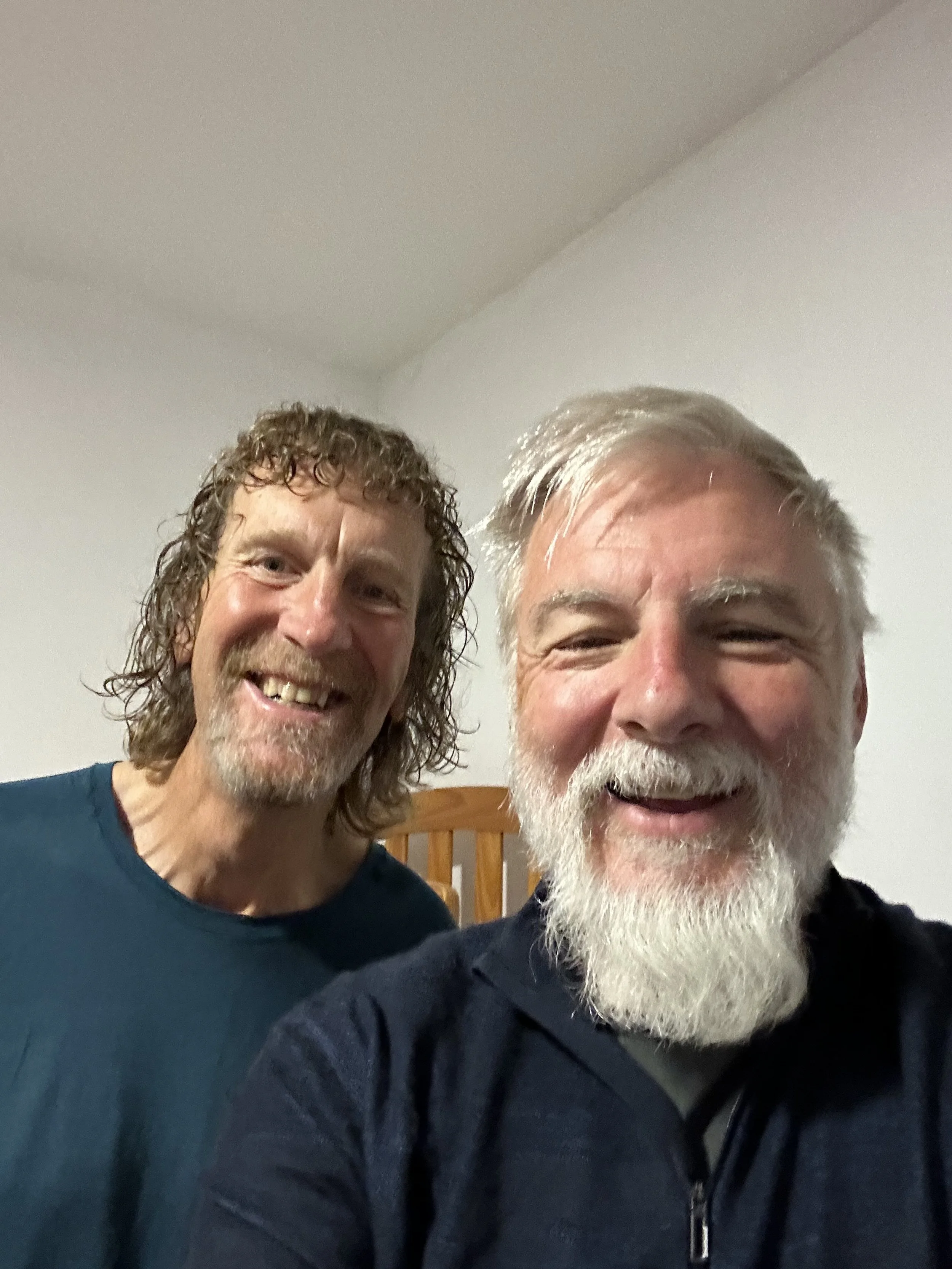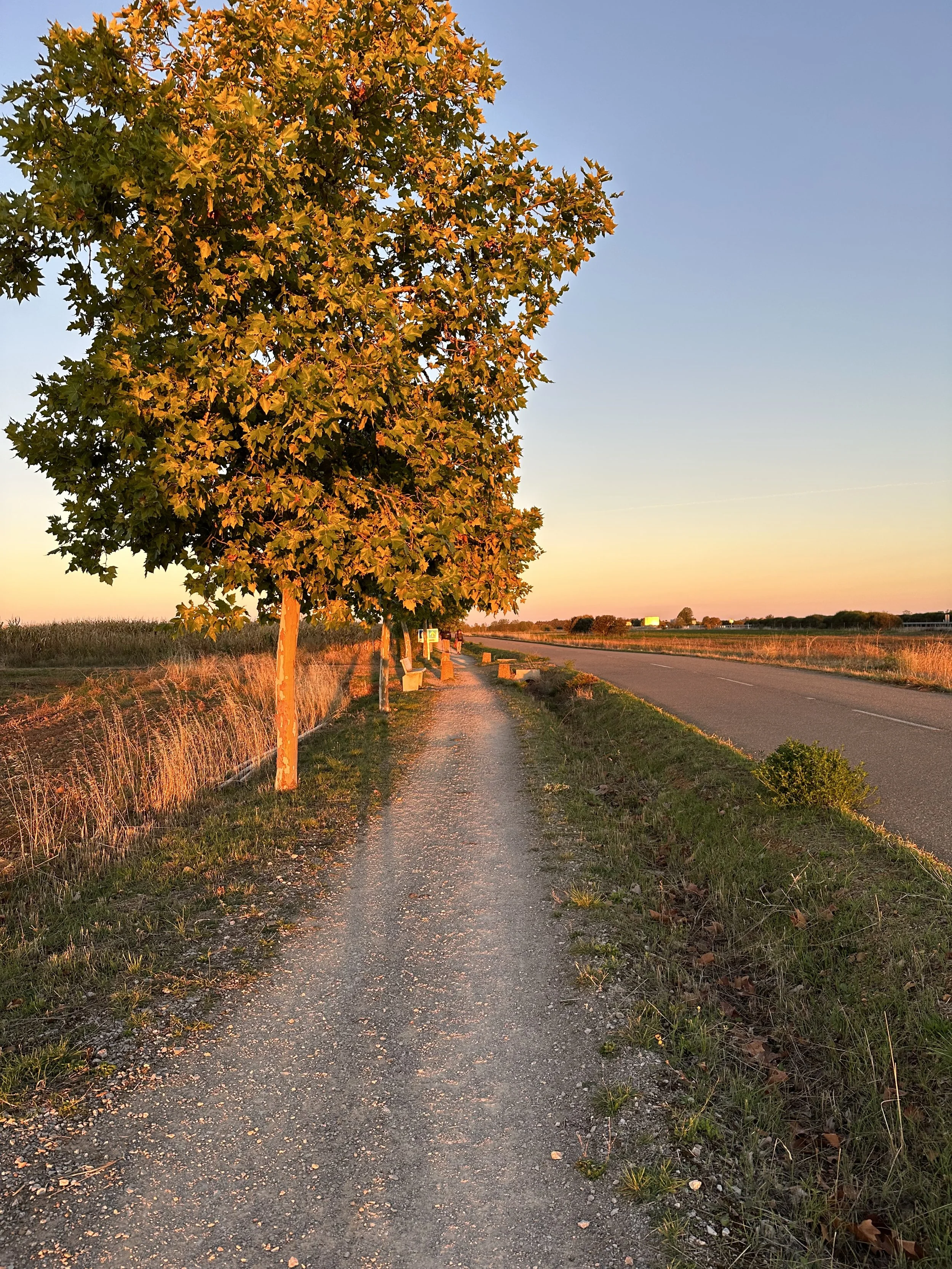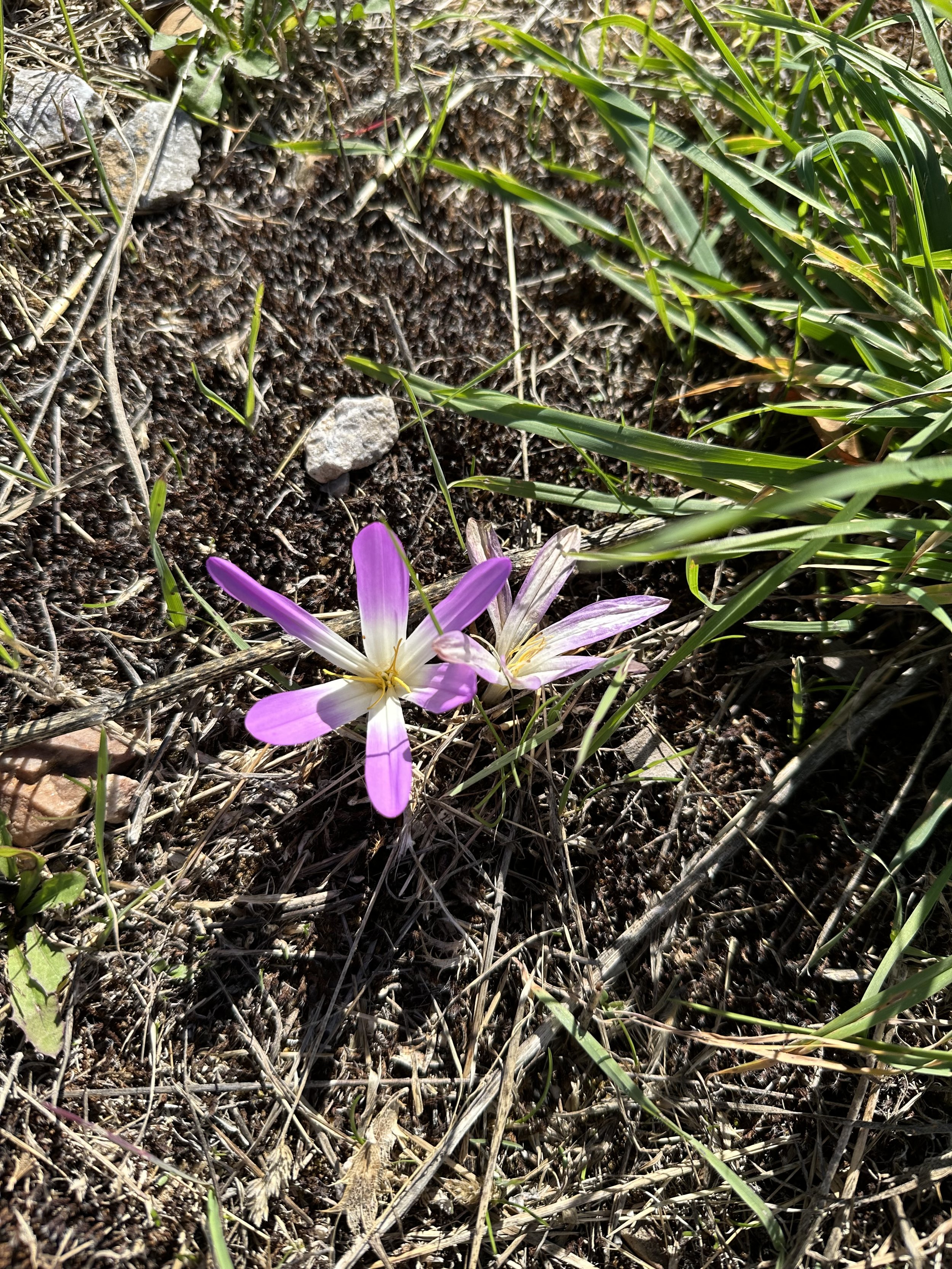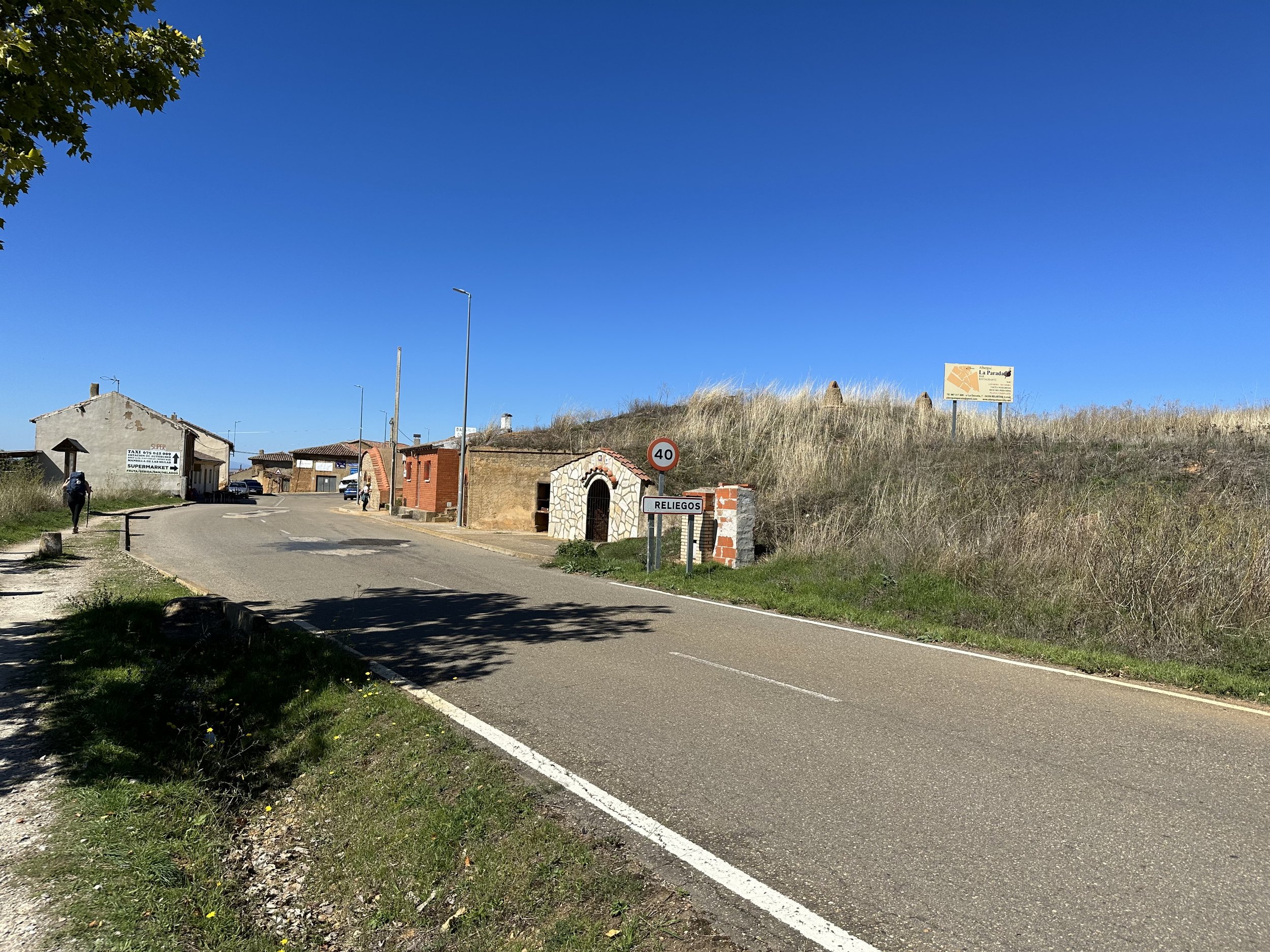Whispers from the Camino—Day 21
September 25 Sahagun to Reliegos 30.3 km
A quick early morning selfie with Roger before heading out.
I woke up early, before the sun was up, as was becoming my practice. I really relished the early morning walking in the dark before the sun peaked over the horizon. Roger was stirring as well in the bunk across from me. We quickly made our way down to the breakfast room and ate in silence as the monks had requested us to do as a morning ritual.
Back in our room, Roger and I rolled up our bedding and packed our belongings. We shared a goodbye that seemed to be more weeks in the making than the few hours we had. We had been on a similar professional and spiritual path. Even though we were parting for the day we expressed our confidence that our paths would likely cross again—maybe on the Camino and maybe as we returned to our homes in the Pacific Northwest.
An hour in the early morning sun glows.
The landscape this day was very much of “more the same.” We were still walking across the Meseta, the long 200-kilometer plain. It was essentially flat and extended as far as the eyes could see with fields of sunflowers and wheat broken up only by the occasional small village. This does not mean it was boring. In fact, I had discovered the more barren the landscape the richer the internal dialogue. Today was no exception.
Much of the day I pondered the lunch conversation with Roger. Both of us felt strongly that we were living at the edge of a great transformational threshold as one world was disappearing and another was aching to be born. We had both served as interim pastors and had come to recognize the pattern of churches wishing for a former time when the pews were full and children and grandchildren carried on the faith tradition. Both of us discovered that the work was less about helping these churches recover a wished for past and more about helping them grieve the loss of a former religious culture.
Kilometer after kilometer of this therapeutic landscape.
At the same time both of us had friends and acquaintances who were exploring new forms of spiritual devotion, largely cut off from organized church. Communing with the Sacred in nature was a common theme. Many of our friends would rather snowshoe to the top of a peak and experience “the glory of God” from that rarefied vantage point than to sing “For the Beauty of the Earth” in a wooden pew. Friends were seeking transformational experiences in the form of silent retreats, wilderness quests and pilgrimages.
Walking through a small village
I shared with Roger my experience of walking with twelve other pilgrims on the one-week Camino de Sonoma in California. One of the things that struck me was that this small group became closer and more intimate in one week of daily contact than many church members do by attending weekly services for 52 weeks in a row. In the book Weird Church author, Beth Ann Estock, commits one whole chapter to a new movement she calls, “Same Time Next Year” churches. That is, a “church,” that is exclusively centered around annual events such as week-long retreats, planned trips together, or service or mission projects.
For Roger and me, it didn’t mean that one was better than the other. But it did point to the fact that people were finding new ways outside of regular Sunday worship attendance to develop a rich intimacy with the Sacred (or God), to connect deeply with other spiritual seekers, and to engage in a spiritual discipline such as walking as a form of prayer.
As I reflected on our conversations I was reminded that just a few days prior I had said to myself, “I am now no longer a professional minister who occasionally commits to pilgrimages. I am a pilgrim who offers myself to serve churches, when needed.” This felt really true for me. My identity was not rooted in my ordination status as a Presbyterian minister. My core and truest identity was rooted in staying open to where the pilgrim path would take me.
Just two months prior to walking the Camino I was the keynote speaker for one of these “same time next year” spiritual communities—the annual one-week Seabeck Christian Family Camp in Washington State. My program theme was “Life as Pilgrimage.” Up to that point I had completed three different pilgrimages of ten weeks, seven weeks, and one week. I told the group that not everyone can take a seven-week break to walk or cycle a pilgrimage, but we can all treat “life as a pilgrimage.”
Entering Reliegos after 30 kilometers of walking.
It was interesting to me that I approached that program as if I had lessons for life from my pilgrimages, but now even walking the Camino was part of my “life as pilgrimage” experience. I wasn’t taking a break out of my life to do a pilgrimage. The pilgrimage was my life. It didn’t mean that my life would be jumping from one actual pilgrimage to another. It just meant that when I reached the end of this Camino it would only mark the end of one pilgrimage experience and the beginning of another.
The Camino was not a break from my life. It was my life.






